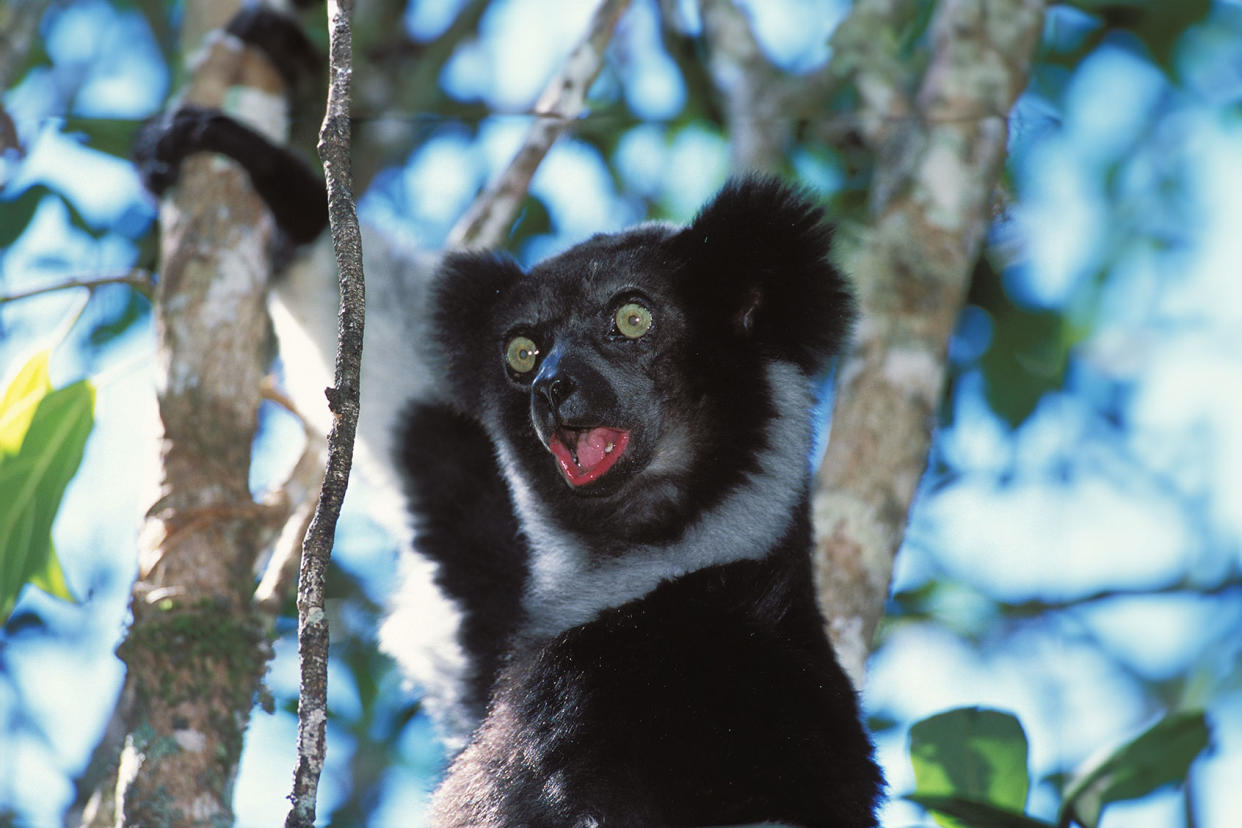Lemur calls have a rhythm that may explain how humans evolved singing and music, study finds

Making music is strictly a human trait, at least with the complexity of jazz musicians and classical pianists. But of course some animals make their own songs, including frogs, birds and cicadas. Some primates also make a sort of musical calls and studying this can teach us a lot about why humans evolved singing and music-making capabilities in the first place.
Take the indri or babakoto. It's a white and black primate with green eyes, better known as the Madagascar lemur, which communicates with its peers with distinct sounds like singing and rhythmic vocalizations. A new study in the journal Annals of the New York Academy of Sciences reveals there is more to indris' calls than pretty sounds; the intelligent primates actually possess "isochrony" in their communication, meaning there is an equal amount of time between their sounds and notes thereby creating a consistent beat.
This revelation sheds light into the origins of humans' own communication skills. Because humans share the ability to communicate with isochrony, the results indicate that at least aspects of humanity's musical capacity existed early in our primate history. Alarm calls, which animals use to warn their peers of predators, predated songs and therefore isochrony may have developed from alarm calls before other rhythmic patterns emerged.
"The findings highlight the evolutionary roots of musical rhythm, demonstrating that the foundational elements of human music can be traced back to early primate communication systems," study co-author Dr. Daria Valente, Department of Life Sciences and Systems Biology, University of Turin, said in a statement.
At the same time, indris are distinct in certain ways they use isochrony.
"Isochrony is the backbone of most indri vocalizations, unlike human speech, where it is rare," the authors write. "In indri, isochrony underlies both songs and hierarchy-less call sequences and might be ancestral to both."


